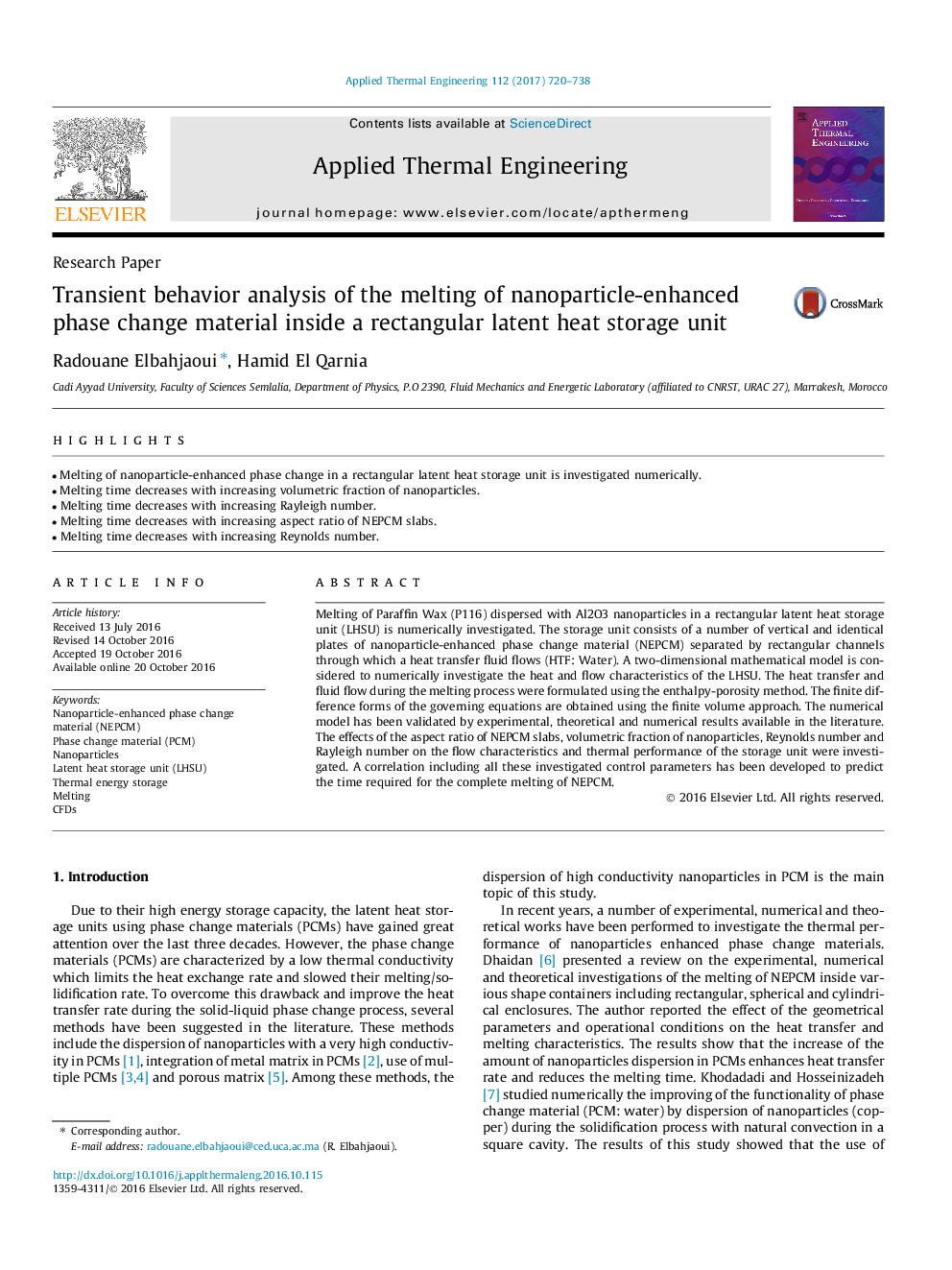| Article ID | Journal | Published Year | Pages | File Type |
|---|---|---|---|---|
| 4991745 | Applied Thermal Engineering | 2017 | 19 Pages |
â¢Melting of nanoparticle-enhanced phase change in a rectangular latent heat storage unit is investigated numerically.â¢Melting time decreases with increasing volumetric fraction of nanoparticles.â¢Melting time decreases with increasing Rayleigh number.â¢Melting time decreases with increasing aspect ratio of NEPCM slabs.â¢Melting time decreases with increasing Reynolds number.
Melting of Paraffin Wax (P116) dispersed with Al2O3 nanoparticles in a rectangular latent heat storage unit (LHSU) is numerically investigated. The storage unit consists of a number of vertical and identical plates of nanoparticle-enhanced phase change material (NEPCM) separated by rectangular channels through which a heat transfer fluid flows (HTF: Water). A two-dimensional mathematical model is considered to numerically investigate the heat and flow characteristics of the LHSU. The heat transfer and fluid flow during the melting process were formulated using the enthalpy-porosity method. The finite difference forms of the governing equations are obtained using the finite volume approach. The numerical model has been validated by experimental, theoretical and numerical results available in the literature. The effects of the aspect ratio of NEPCM slabs, volumetric fraction of nanoparticles, Reynolds number and Rayleigh number on the flow characteristics and thermal performance of the storage unit were investigated. A correlation including all these investigated control parameters has been developed to predict the time required for the complete melting of NEPCM.
